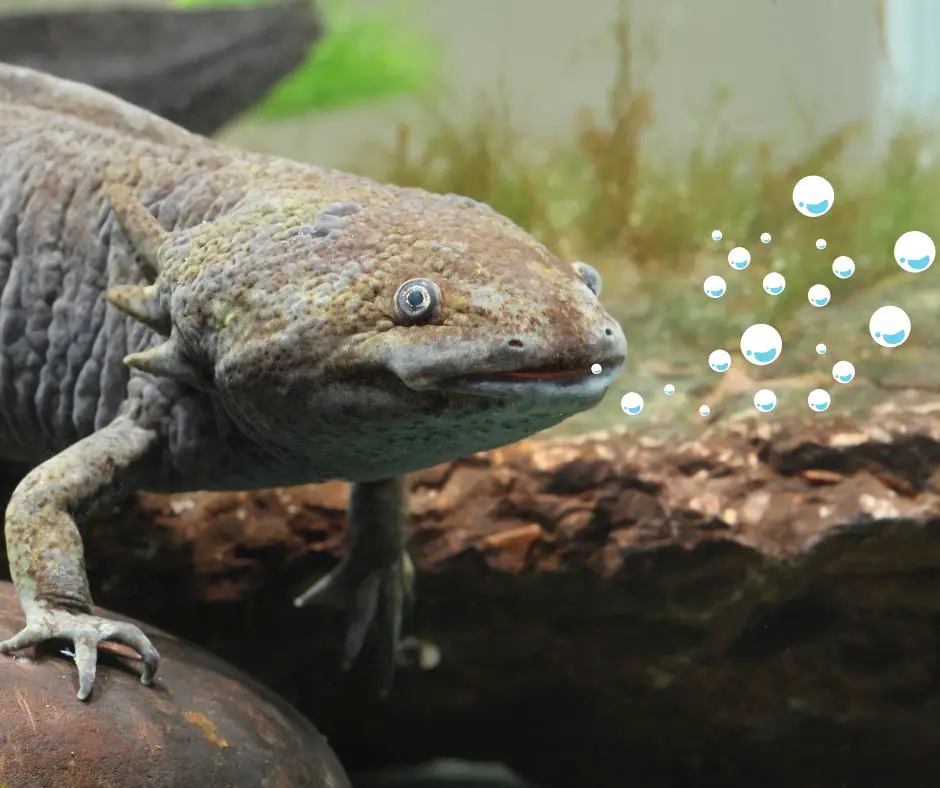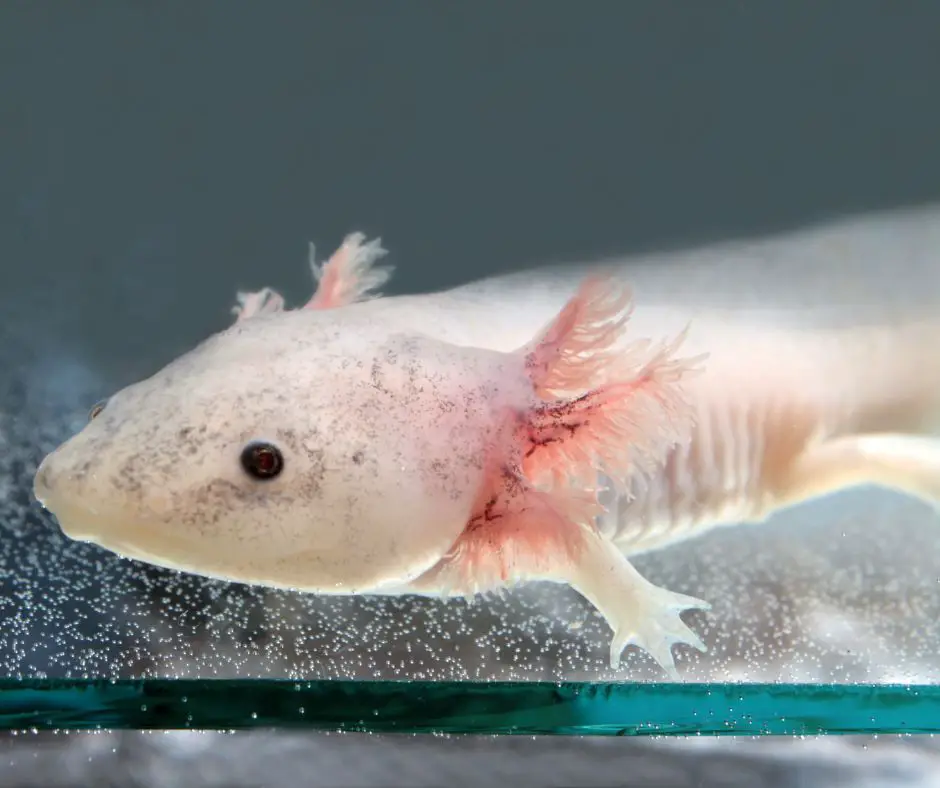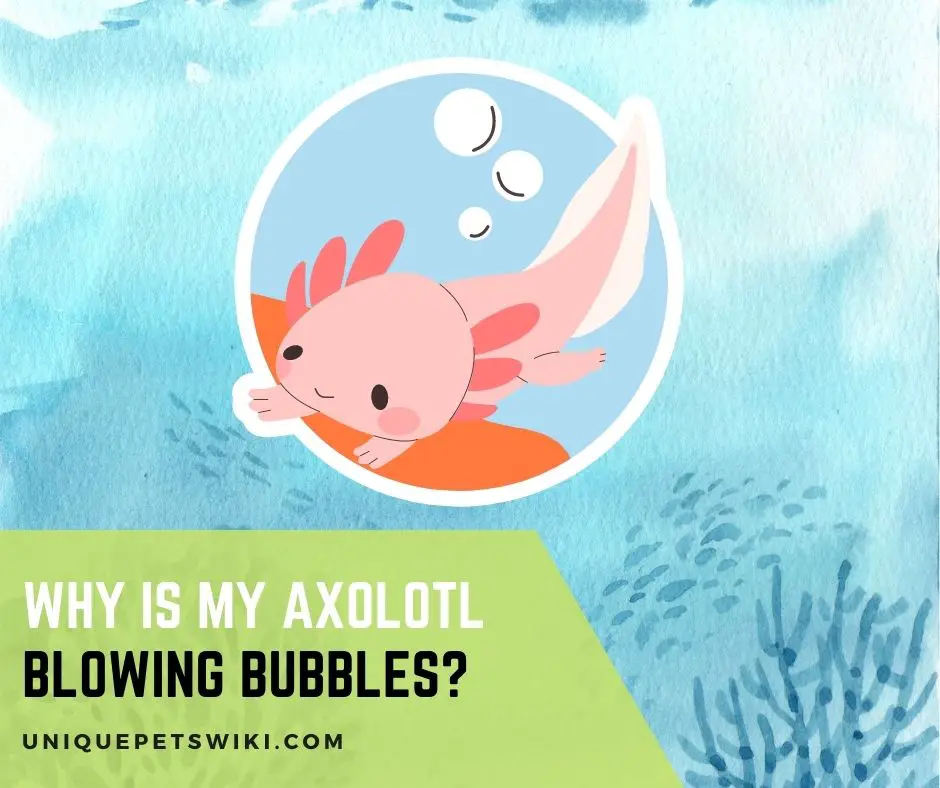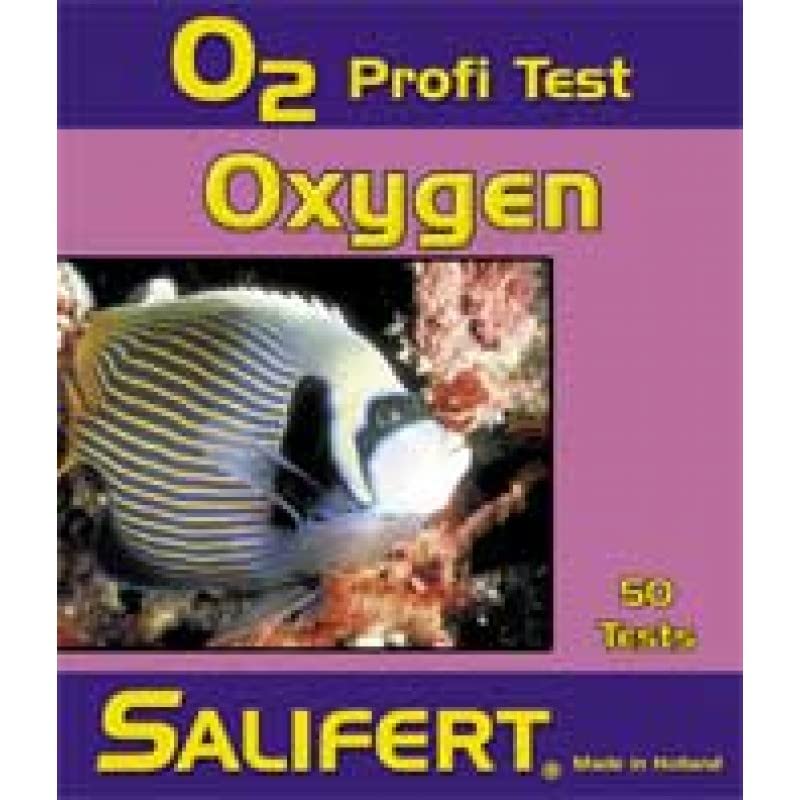The first time I saw my axolotl blowing bubbles, I was fascinated. I thought to myself, “what more can these lovely creatures do?” Not many people know that axolotls have lungs and that they can breathe through their lungs.
The mouth of axolotls is lined with mucous membrane tissue that is designed to allow gaseous exchange and metabolic waste excretion. When they swim to the water surface to gulp for air, they blow bubbles as they sink back down. This kind of breathing is called buccal pumping/respiration.
It’s something they do occasionally and it’s normal. However, it becomes abnormal and also a thing of concern if they surface to breathe more frequently. When it becomes too frequent it’s a pointer that the tank is lacking in oxygen and should be aerated as soon as possible.
Keep reading to learn everything about axolotls blowing bubbles and what you can do to prevent insufficient oxygen in their tank.
Contents
Why Is My Axolotl Blowing Bubbles?
An axolotl bubble blowing isn’t usually a sign of a breathing problem. Although if it’s happening quite frequently, you should be concerned. Your axies blow bubbles while gulping for air (called buccal pumping). Sometimes they also blow bubbles because they are excited.
Buccal pumping once in a while does not mean insufficient oxygen, but frequent swimming to the surface to breathe is a sign of lack of oxygen in the tank.
Below are some of the reasons axolotls will blow bubbles.

Buccal Pumping As a Way to Gaseous Exchange
Buccal pumping is a type of breathing that involves the expansion and contraction of the mouth cavity, which facilitates the flow of water or air into the lungs.
Axolotls have mucous membrane tissue lining their mouths, which is meant to enable gaseous exchange and metabolic waste disposal.
Normally axolotls don’t breathe with their lungs (mouth), but sometimes when they need some oxygen, they swim to the surface of the tank to take a gulp of air. As they sink back to the bottom of the tank, they blow bubbles.
If this happens once in a while, you wouldn’t need to worry. However, if it’s a recurring incidence then it’s a pointer to something issues with the water quality and deficient in oxygen.
You can tell that your axolotl is struggling to breathe if you notice other signs such as floating or fighting to get out of the water at all costs.
At this point, you should immediately check the water parameters. You can improve the tank’s oxygenation by aerating it, checking the filters, and adding air stones.
Salifert OXPT Oxygen Test Kit
- Corals and marine fish require very high levels of oxygen concentration because of the low solubility of oxygen in salt water so it is very important to regularly test the level of oxygen present
- The Salifert Oxygen Profit-Test is extremely fast, measuring oxygen levels in just a few minutes and is scaled from 2 - 14 mg/L
- Sufficient for up 40 tests
- Can be used for marine, fresh and garden pond water
- Made in Holland
Last update on 2022-12-29 / Affiliate links / Images from Amazon Product Advertising API
To Expel Something Out
Sometimes your axolotl can blow bubbles because it’s trying to expel something that has gotten trapped in its mouth or digestive tract. They could have swallowed hair, a chunk of dust, or other particles that dropped into the water.
When they do this, they don’t necessarily have to swim to the surface of the water, they just blow the bubbles at the bottom of the tank. If after a few days your axolotl is still doing this, you may need some medical help.
Preventing this from happening is better than trying to fix it when it happens – Install a filtration system to keep particulates out of the water, use a wire lid on the tank, and pay attention to that behavior.
They Are Excited
Yeah, axolotls also blow bubbles when they are excited. They do this resting or exploring at the bottom of the tank. One of the ways axolotls show their excitement and love for their keeper is to blow bubbles whenever their keepers approach the tank.
This is not something they do often, so you should consider yourself lucky to see yours always get excited to see you. Dancing is a major mating behavior among axolotls. But they sometimes blow bubbles when mating or playing. The thing is, you’ll need a pair of axolotls to see this.
Do You Worry If Axolotl Blows Air Bubbles?
Yes, axolotl blowing air bubbles is not a behavior they exhibit quite often. When your axolotl blows out some bubbles, you don’t necessarily have to panic, just watch out for other signs such as floating, struggling to breathe, or trying to get out of the water/tank.
If the bubbles come with any of the aforementioned signs, then you should check your water parameters because this only means that there isn’t sufficient oxygen in the tank.
However, if your axolotl appears relaxed at the bottom of the tank while blowing out air bubbles, you don’t have anything to worry about. Your pet is just having fun.
Tetra Whisper Easy to Use Air Pump for Aquariums (Non-UL)
- POWERFUL: Tetra Whisper Air Pump provides dependable airflow to your aquarium.
- QUIET: Patented dome shape, suspended motor and sound-dampening chambers for quiet operation.
- PROVIDES OXYGEN AND WATER MOVEMENT: Keeps underwater pets happy.
- AVAILABLE SIZES: Select the proper size for your tank – 10, 20 and 40-gallon pumps have single air outlets, 60 and 100-gallon pumps feature dual outlets.
- NON-UL LISTED: Reliable performance at an economical cost.
Last update on 2022-12-29 / Affiliate links / Images from Amazon Product Advertising API
Axolotl and Odd Behavior
Younger axolotls tend to bounce when bitting or getting a grip on their food. They bounce because they don’t weigh much. Although you’ll hardly see adult axolotls bounce while eating, axolotl bouncing is nothing to worry about, unless your axolotl appears frantic.
- axolotl yawn
Axolotls yawn when trying to keep down a rowdy live food they have eaten and when they appear tired or bored. They yawn with their mouths wide open just like humans. It’s not a common behavior so you shouldn’t be worried.
If burrowing is not part of axolotls’ behavior, why is my axie digging her substrate? There isn’t sufficient information about axolotl digging behavior in the wild, however, they do hide in aquatic vegetation and mud to escape being eaten. Thus, captive axolotls dig for fun and this is normal. Nonetheless, you should be concerned if the digging lasts longer than it should.
How much swimming is too much for axolotls? Axolotls are not good/fast swimmers. They swim with an average speed of 10mph (16kph). But they love swimming around the tank in search of food and to explore their environment. Younger axies are more energetic and swim more frequently than adults.

Conclusion
Your axolotl is blowing bubbles and that got you startled. You thought, “what it is doing?” The good thing about bubbles is that they are a sign of life! The bubbles are actually an exchange of oxygen and carbon dioxide, so your axolotl is doing very well!
Since it is primarily a water-dwelling creature breathing with gills, sometimes they swim to the water surface to take some air with their lungs. As they sink back to the bottom of the tank, they blow bubbles.
The bubbles are caused by a gaseous exchange. So rest easy, your axolotl is doing great! Sometimes they don’t swim to the surface of their tank, they would stay at the bottom to blow the bubbles. This too is completely normal.
You should only worry when the frequency at which they go to the water surface to take a gulp of air gets too much and if they exhibit other worrisome symptoms such as struggling to breathe and floating.


